A system can only ever be as ‘smart’ as its design. Achieving a ‘smart grid,’ therefore, depends on system designers having access to tools capable of assessing system reliability under an evolving portfolio of potential smart grid applications. In this paper, ‘smart grid’ denotes the application of advanced sensors and monitoring technologies, integration of distributed energy resources (DER), and coordination of distributed controls with grid operations. As the number of smart grid applications continues to grow, the development of new reliability assessment models, metrics, and analysis methods is vital to fully understand and assess the potential impacts and benefits of such applications to the bulk electric system.
Workshops were held in both Europe and North America to identify and discuss potential gaps and concerns in this area while capturing a broad range of industry experiences and perspectives. This paper presents findings from both workshops (Part I) along with a roadmap for future collaborative research and development (Part II).
R&D Challenge
Advances to existing or development of new reliability assessment tools may be necessary as smart grid applications may significantly alter domain characteristics as well as introduce new domain linkages (Figure 1). Additionally, advanced controls and communication technologies can improve system visibility and controllability but also increase overall system complexity. Reliability considerations, therefore, need to account for the increased dependence on these infrastructures as well as new resource operating characteristics, such as the variability and uncertainty of demand response. R&D is needed to identify the influence and pertinent characteristics of various smart grid applications and how best to represent these applications within reliability assessment practices.
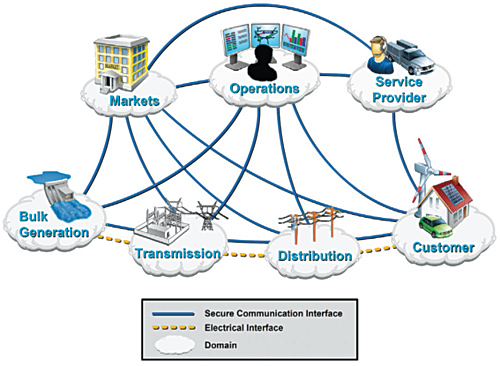
Figure 1: Smart Grid Conceptual Model – top level1
North American Electric Reliability Corporation (NERC) and European Network of Transmission System Operators for Electricity (ENTSO-E) 2, 3, 4 have acknowledged the need to advance current system planning and assessment tools to meet these challenges. Coordinated research in this area has thus far been limited but remains essential in the development of industry-accepted assessment tools.
Gerry Cauley, CEO of NERC sees it this way: “Integration of these new technologies requires changes in the way the bulk power system is planned and operated to maintain reliability. Further, additional tools/models are required to support their integration to meet policy and strategic goals.”5
Exploratory Workshop Purpose
Two exploratory workshops were hosted by the Electric Power Research Institute (EPRI) to identify concerns and gaps in the understanding of the reliability impacts of smart grid applications. The events were held at NERC headquarters in Atlanta, Georgia and at the University of Manchester in England. Workshop participants included a diverse group of experts from utilities, regulatory organizations, vendors, and academia.
Reliability Assessment Concerns and Gaps
The smart grid encompasses a wide range of technologies and applications with the potential to impact overall grid reliability. The following is a breakdown of reliability assessment concerns highlighted by workshop participants:
1. Model and Data Limitations
Maintaining accurate component and system models has always been a challenge in power system analysis. This was made evident by workshop participants who highlighted the need for improved models for variable renewable resource technologies, advanced HVDC lines and converter stations, and generator control. Load models, in particular, are increasingly important as load progressively becomes a more significant system resource and a major factor in the changing dynamics of the system. Future models will need to include the characterization of distributed control systems, new load types such as electric vehicles (EV), and customer response and behavior elements.
The general lack of relevant system data, such as protection settings, operator actions, and climatic conditions were earmarked as a significant barrier to carrying out effective event analyses. It is also difficult to predict how different sources of uncertainty may impact system reliability. More robust sensitivity analysis tools are needed to predict, gauge, and account for potential impact to system reliability caused by ‘source uncertainty.’
Advanced sensor and data collection technologies may help in verifying or refining system models. For example, Western Electricity Coordinating Council (WECC) found that its plant models did not represent actual system events as seen by SCADA systems (Figure 2) until they adjusted these models based on phasor measurement data.6 Although visibility across all parts of the grid could improve system modeling and the forensic analysis of system events, the granularity needed to represent widespread smart grid controls and new load characteristics requires further research. Related data management, analysis, and visualization challenges must also be addressed.
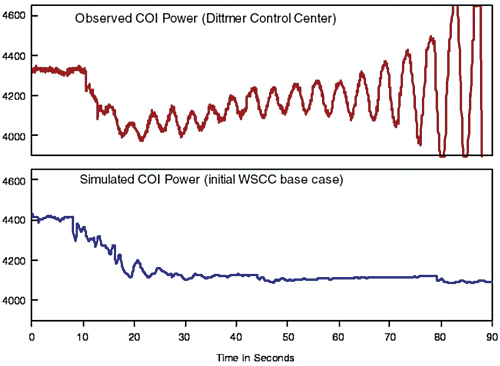
Figure 2: Example System Oscillations observed by SCADA and PMU measurements.7 (IEEE© 2006)
2. Variable and Intermittent Resource Integration
The proliferation of variable renewable sources is increasing in both the United States and Europe. EPRI anticipates 135 GW of renewable energy sources in the U.S. by 20308 and the European Union (EU) has adopted a goal of 20 percent of the power generation from renewable resources by 2020. The Spanish transmission owner and operator Red Eléctrica reported that 32 percent of generation came from renewable resources in 2010, noting the variability of renewable energy sources and greater amount of DER. The challenge is to sufficiently characterize and account for the uncertainty associated with increasing levels of energy generated from variable resources.
Workshop participants indicated that new assessment methods, models, and metrics were required to evaluate system flexibility and reserve requirements in order to determine long-term operation needs under changing system resources, capacity, and networks. Just as importantly, these new techniques must be reasonable to execute, and the results must be directly applicable to system planning. To this end, active collaboration between academic research and the industry will be critical.
Potential issues include the retirement of mid-merit conventional generators due to market constraints associated with higher penetrations of wind and photovoltaic (PV) sources. These factors may necessitate the formulation of new capacity products to ensure sufficient reserves.9, 10 Methods to determine the features and characteristics of these new products still need to be developed. In addition, the adequacy of deterministic analysis tools in light of variable resources and smart grid technologies was questioned, with strong indications for further considerations and applications of probabilistic risk assessment (PRA) and planning tools such as ASSESS11 and TransCARE.12
3. Protection Coordination
Two-way flows of energy between bulk and distribution systems represent challenges for the coordination of system protection. Particular interest was expressed concerning under-frequency load shedding (UFLS) and under-voltage load shedding (UVLS) programs. Distributed generation (DG), demand response (DR), conservation voltage reduction, and other smart grid applications can result in unplanned deviations from estimated circuit demands. If the circuits are part of a UFLS or UVLS the change in system demand may be less than anticipated in the design scheme and will not result in the expected load reduction.
Methods and metrics are needed to facilitate easier, less time-intensive determination of UFLS and UVLS relay settings and locations while accounting for geographic and temporal variations of distributed resources and other smart grid applications. Conversely, increased visibility and controllability may permit more advanced and granular load-shedding schemes.13 Advanced protection functions and evaluations must be sufficiently robust, providing the desired operation under changing conditions and accounting for the integrity and trustworthiness of the input signals.
4. Distributed Energy Resource Integration
In the context of this paper, DER includes any DG, renewable energy resources (RES), energy storage (ES), and DR connected at the distribution or end user. These resources may be under local control or under the control of a distribution management system or load aggregator.
A NERC report by the Integration of Variable Generation Task Force (IVGTF) indicates that although DER represents a small portion of Generation in the United States, plug-in electric vehicles (PEVs) and stationary storage could reach nearly 5 GW and DR could grow from the current 40 GW to 135 GW in a decade.14 In addition, the Solar Energies Industries Association (SEIA) reports almost 20 GW of installed PV capacity in 2011. This more than doubles the 900 MW installed in the U.S. in 2010.15
DER penetrations are growing at an even faster rate in Europe. The Italian energy company Enel reported a 1.35 GW increase of DG and RES on its system in 2009.16 By 2011, the installation rate of distributed PV alone had risen to 2.67 GW.17 Germany has also seen a significant penetration of DER with 7.4 GW of additional PV capacity installed during 2011 raising the total installed PV capacity to 24.8 GW.18
Workshop discussions revealed the overall need for models that sufficiently represent DER performance, availability, deliverability, reliability, and control functions. Research to identify the level of modeling detail and visibility requirements for various applications was is also needed. Several potential DER reliability issues and assessment concerns stemming from particular applications and characteristics were also noted and described below.
Ancillary Services and Flexibility Participation. Forecasting and assessment tools are needed to evaluate the reliability benefits and limitations of incorporating high levels of DER, providing regulations and reserves while accounting for factors, such as resource performance, availability, and sustainability. For example, current PJM Reliability Council rules place a 25 percent cap on DR in PJM’s synchronous reserves program.19 Interest on increasing this cap while maintaining system reliability was expressed during the workshop.
In addition to reserves, large aggregate DER is often considered a possible resource to provide system flexibility across various time scales in light of increasing levels of renewable generation. For example, PEVs and other forms of DER are often seen as potential resources which can be utilized to offset large variable generation.20 However, considering its variability and uncertainty, additional models, methods, and metrics are needed to fully gauge and understand the flexibility benefits of DER.
System Restoration. Smart grid-dispatched DER represents a potential component in black start operations and the mitigation of cold load pickup issues. Evaluation of the implementation design and effectiveness of these potential operations is still in the early stages. Non-coordinated automatic reconnection of a large number of DER could adversely impact restoration efforts and it too will require further investigation.
System Event Ride-Through. Bulk system-level events can result in low-voltage and under-frequency conditions that propagate down to the medium- and low- voltage levels. The potential then arises for such events to violate local grid codes or IEEE 154721 standardized disconnecting requirements for DG during abnormal voltage and frequency events. At high penetrations of DER, these events can result in the disconnection of large numbers of DG, with adverse impacts on the bulk system.
During the 2003 blackout in Italy, for example, 1700 MW of DG tripped at an under frequency of 49 Hz – further increasing the shortage of generation during the event.22 The abrupt disconnection of increasingly larger amounts of distributed sources can also result in longer voltage recovery times as shown in Figure 3. Challenges in this area include addressing the lack of visibility by developing new requirements and metrics, constructing equivalent models that account for step-down transformer and distribution circuit configurations as well as DG output, and developing screening tools to identify areas of system vulnerability.23
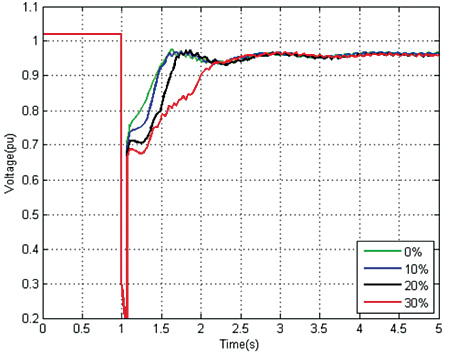
Figure 3: Example Voltage Response at Different Levels of Distributed PV Dropout23
Rotor Angle and Frequency Stability. High penetrations of DER and renewable sources coupled with retiring generation could decrease overall system inertia and primary frequency response, thereby increasing stability concerns.24,25 However, industry development of new assessment methods and dynamic models has been limited. Although inverter-based bulk system and distributed resources have the potential to emulate traditional source characteristics such as generator droop response, these applications are in the initial stages and require additional analysis.26
Voltage Stability. In the U.S., distributed resources are prohibited from regulating voltage by IEEE 1547. The displacement of voltage-regulating generation by DER could be a voltage stability concern. Even when DG and inverter-based resources are operated to provide voltage or reactive power, the support to the bulk system may be limited as illustrated in Figure 4.27 Furthermore, potential voltage support from the distribution management systems (DMS) will need to be coordinated with voltage-regulation mechanisms and transmission system requirements.
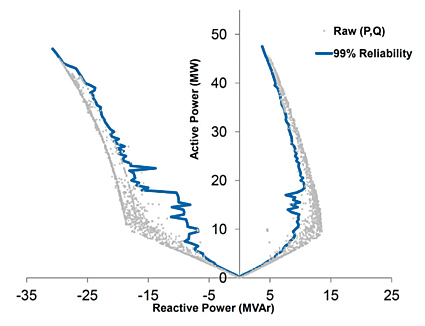
Figure 4: Evaluation of Aggregate DG Reactive Power Support at the Transmission and Distribution Interface (Source: Andrew Keane, UCD
Customer Behavior and Participation. The use of dynamic pricing, such as time-of-use (TOU) rates, critical peak pricing, and real-time pricing is expected to be a key feature of the smart grid. The reliability benefits or ramifications, like price volatility, involve complex dynamic relationships between markets, end-use customers, and energy management systems that are not completely understood or easily captured in today’s power system analysis tools. Even with incentive-based DR implementations, accounting for customer behavior is essential to understanding the availability and frequency of the many emerging resources.28
5. Information Technology Dependence
Smart grid applications will greatly increase the power system’s reliance on advanced communications and information technologies. Information and communications network failures – whether unintentional or deliberate – may subsequently result in distribution or transmission system reliability events. Traditional reliability analyses have focused only on the power portion of the grid.29 Consequently, traditional hierarchical levels (Figure 5) do not readily incorporate virtual power plants, DR aggregators, and other distribution-level (HL III) applications that can impact bulk system reliability (HL I and HL II) and whose operations are communication system dependent.
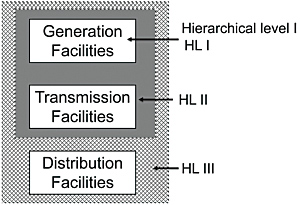
Figure 5: Reliability Assessment Hierarchical Levels (Source: Sudhir Agarwal, General Reliability)
The need for tools which can account for communication system integrity, device failures, and cyber security risks within the overall reliability assessment was a common theme at both workshops. Areas of further research include:
- Incorporation of advanced communication and control failure modes and physical system interdependence into system contingency evaluations
- Assessment of physical and cyber operational impacts from cyber events and communication failure events
- Data collection and model formulation concerning communication and control asset life cycles and failure rates
- Assessment method derivation and event-driven co-simulation of cyber and physical systems
- Development of equivalent reliability models for the communications-dependent aggregation of DER
6. Control System Architecture Interaction and Design
Intertwined with communications system dependency is the increased use and subsequent dependency on automated control systems. This includes special protection systems (SPS), remedial action schemes (RAS), and wide area management systems (WAMS). A need was expressed for tools that can quantify benefits and risks with increased levels of automation, represent interactions between centralized and decentralized controls, and incorporate important market functions. Detailed investigations of the fidelity required in representing telecommunications and wide area control schemes are also needed. Although smart grid activities have spurred advancements in distribution planning tools, such as EPRI’s OpenDSS simulator30 and DOE’s GridLab-D,31 similar advancements are needed in bulk system planning tools. Nonetheless, advanced distribution simulation tools are valuable resources that can form the basis for gauging changing distribution system characteristics and the development of representative load models.
7. Education and Training
The education of planning, operations, and field personnel in light of increasing system complexity, new technologies, and changing system characteristics was a particular concern discussed during the workshops. Advancements in assessment models, methods, and metrics incorporating emerging technologies and applications were recognized as important components of a better understanding of technology applications and system interactions. Simulation and modeling tools will generate the wider body of knowledge needed to determine new procedures and system design criteria; these tools can also serve as training platforms.32 Education and training are also equally central to the application and acceptance of future assessment tools.
Reliability and Performance Indices
Understanding and gauging the performance of an increasingly complex system require reliability and performance metrics for specific technologies and for the overall system. These metrics may not necessarily fit traditional conventions. For instance, performance indicators of curtailment and demand response will also need to account for inconvenience to the end user as well as other extraneous factors such as ambient temperature.33 Several assessment gaps requiring future research were discussed during the workshops:
- The effectiveness of peak demand-based metrics, such as loss of load expectation (LOLE), in the presence of variable resources, storage, and smart grid demand-shaping capabilities
- Flexibility indices and assessment methods for distributed resources, e.g., storage and DR, and overall system performance
- Metrics quantifying the reliability and performance of aggregate demand-side management operations and microgrid operations
- Visibility, controllability, and risk metric associated with distribution-centric smart grid applications
- The identification of measurable cyber security parameters and potential risk metrics
- The application and integration of PRA methods and performance indices in system planning
In the next issue of Electric Energy T&D, EPRI’s future research framework will be laid out. It will include potential case study and assessment areas; discussions on the NERC Smart Grid Task Force and recommended work plan; ENTSO-E and EDSO-SG research, development, and deployment program; and EPRI grid transformation and modernization outlook.
About the Author
 Jason Taylor is a Senior Project Engineer in the Power System Studies Group at EPRI. Dr. Taylor has worked in the industry for over a decade and holds a doctorate from Auburn University. His current research targets the advancement of reliability assessment metrics, models, and methods needed to evaluate and design a ‘smarter’ power system. He is a member of the NERC Smart Grid Task Force and a Task Force Leader within the CIGRE committee on Planning and Optimization Methods for Active Distribution Systems. Dr. Taylor can be reached at jtaylor@epri.com
Jason Taylor is a Senior Project Engineer in the Power System Studies Group at EPRI. Dr. Taylor has worked in the industry for over a decade and holds a doctorate from Auburn University. His current research targets the advancement of reliability assessment metrics, models, and methods needed to evaluate and design a ‘smarter’ power system. He is a member of the NERC Smart Grid Task Force and a Task Force Leader within the CIGRE committee on Planning and Optimization Methods for Active Distribution Systems. Dr. Taylor can be reached at jtaylor@epri.com
References
|
1 National Institute of Standards and Technology (NIST) Special publication1108, NIST Framework and Roadmap for Smart Grid Interoperability Standards, Release 1.0. Office of the National Coordinator for Smart Grid Interoperability, January 2010. 2 Reliability Considerations from the Integration of the Smart Grid, Atlanta, GA: December 2010 3 The European Electricity Grid Initiative (EEGI) Roadmap and Implementation Plan: EEGI, May 2010 4 A New Regulatory Framework for transmission system operators (TSO) R&D in ENTSO-E countries, ENTSO-E, Brussels, Belgium: July 2011 5 NERC President’s Top Priority Issues for Bulk Power System Reliability, NERC. Atlanta, GA: January 2011 6 Real-time application of Synchrophasors for Improving Reliability, NERC. Atlanta, GA: October 2010 7 P. Pourbeik, et al. “The Anatomy of a Power Grid Blackout,” IEEE Power and Energy Magazine, Vol. 4, No. 5, September/October 2006, pp. 22-29 8 The Power to Reduce CO2 Emissions: The Full Portfolio – 2009 Technical Report, EPRI, Palo Alto, CA: October 2009. 1020389 9 E. Ela, et al., ”Effective Ancillary Services Market Designs on High Wind Power Penetration Systems” IEEE PES General Meeting, San Diego, CA, July 2012 10 Alternative Approaches for Incentivizing the Frequency Response Reserve Ancillary Service. NREL, Golden, CO: March 2012 11 J. Paul and K. Bell, “A Flexible and Comprehensive Approach to the Assessment of Large-Scale Power System Security Under Uncertainty” Electrical Power and Energy Systems, Vol. 26, pp. 265-272, 2004 12 TransCARE: Evaluate Transmission Contingency and Reliability, EPRI, Palo Alto, CA: 1025568 13 D. Bergman, et al. “Distributed Non-Intrusive Load Monitoring.” 2011 IEEE PES Innovative Smart Grid Technologies (ISGT). 14 Special Report: Potential Bulk System Reliability Impacts of Distributed Resources, NERC. Atlanta, GA: August 2011 15 U.S. Solar Market Insight Report: SEIA, Washington, DC: March 2012 16 F. Cazzato and S Botton, “Connection of Distributed Generation to ENEL’s Network in the Transition Period from Passive Networks to Smartgrids,” CIRED 20th International Conference and Exhibition on Electricity Distribution, June 2009 |
17 National Survey Report of PV Applications in Italy 2011, IEA Photovoltaic Power Systems Programme, May 2012 18 National Survey Report of PV Applications in Germany 2011, IEA Photovoltaic Power Systems Programme, July 2012 19 Regulation Performance Senior Task Force (SPSTF) Consensus Proposal Report: Regulation Market Changes, PJM, Valley Forge, PA 20 H. Lund and W. Kempton, “Integration of Renewable Energy into the Transport and Electricity Sectors through V2G” Energy Policy, Vol.36, Issue 9, September 2008 21 “IEEE Standard for Interconnecting Distributed Resources with Electric Power Systems” IEEE Std 1547-2003, 2003 22 Final report of the investigation Committee on the 28 September 2003 Blackout in Italy, Technical Report, UTCE, April 2004 23 Evaluation of Potential Bulk System Reliability Impacts of Distributed Resources, EPRI, Palo Alto, CA: December 2011. 1021977 24 All Island TSO Facilitation of Renewable Studies, EirGrid & SONI. Dublin, Ireland: January 2008 25 R. Guttromson, “Modeling distributed energy resource dynamics on the transmission system,” IEEE Transactions on Power Systems, Vol 17, 2002 26 N.W. Miller, K. Clark, M. Shao, “Frequency Responsive Wind Plant Controls: Impacts on Grid Performance,” Proceedings of IEEE PES 2011 General Meeting, Detroit, MI 27 P. Cuffe, et al., “Effect of Energy Harvesting Network Reactive Support on Transmission System Voltage Performance” CIRED, Frankfurt, DE, June 2011 28 “Consumer Behavior Studies White Paper” U.S. Department of Energy, January 2012 29 C. Sigh and A. Sprinston, “Reliability Assurance of Cyber-Physical Power Systems” IEEE Power and Energy Society General Meeting, 2010 30 OpenDSS – Distribution System Simulation, http://www.smartgrid.epri.com/ SimulationTool.aspx 31 GridLab-D, http://gridlabd.org/ 32 R. Podmore and M. Robinson, “The Role of Simulators for Smart Grid Development” IEEE Transactions on Smart Grid, Vol. 1, 2010 33 M. Bollen, The Smart Grid: Adapting the Power System to New Challenges, Morgan & Claypool, 2011 |
EPRI would like to acknowledge and thank all attendees at both the European and North American workshops for their active engagement and valuable input.







